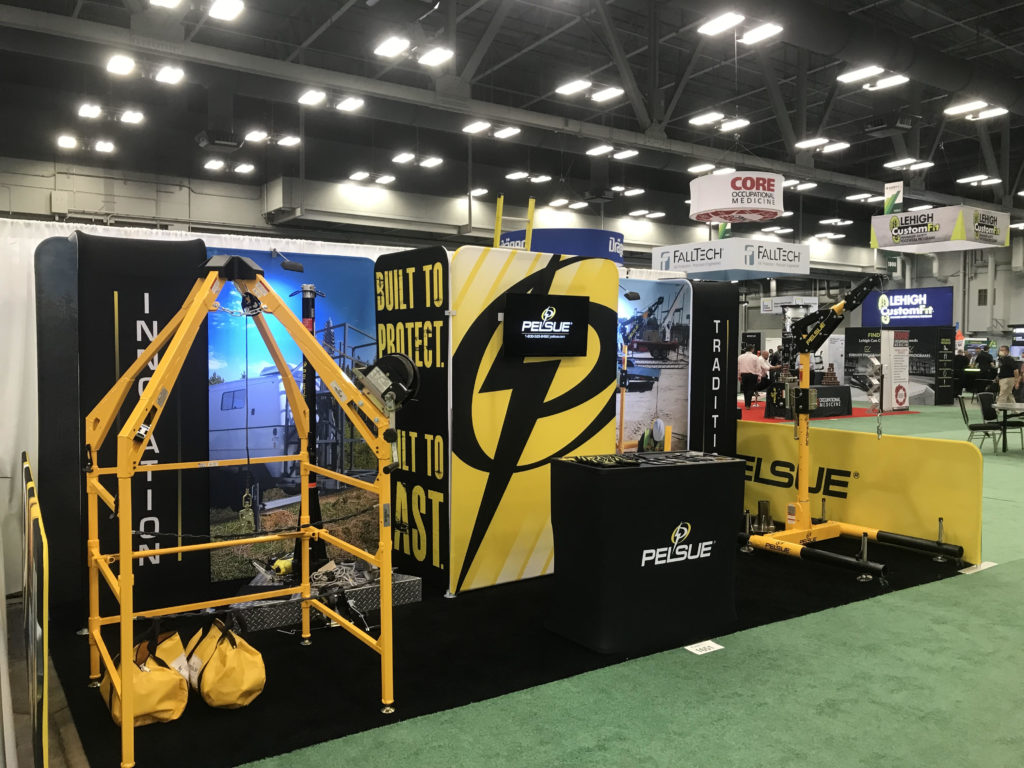Hoists & SRLs for Confined Spaces

March 28, 2019

In confined spaces, hoists and SRLs (self-retracting lifelines) are essential in saving lives in the event a rescue is needed, or if a fall occurs.
Hoists (also sometimes referred to as winches) are mechanical raising and lowering devices. Hoists are designed for the routine raising and lowering of personnel and equipment (depending on the hoist) or for rescuing personnel in the event of an emergency.
SRLs are self-retracting lifelines which arrest falls within 2 feet. 3-Way SRLs arrest falls and add retrieval capabilities in the event of an emergency. When an SRL arrests a fall, it needs to be taken out of service and recertified.
Both hoists and SRLs accompany a type: entry-hyperlink id: 2kX0ZJIJpPDMHG0tjdwtTN, which provides the anchorage for the devices. When entering a permit-required confined space, a hoist is required in case a rescue is needed, or if there’s no ladder and the entrant needs to be safely lowered into the confined space. An SRL is also required as a secondary independent lifeline in the event the ladder or hoist fails. Pelsue has hoists and SRLs which meet all needs of confined space applications.
HOISTS
Pelsue offers three different hoists which are designed around different confined space applications: the Personnel Hoist, Quick Rescue Hoist, and Equipment Hoist which meet or exceed OSHA and ANSI standards.
Personnel Hoist
The Pelsue Personnel Hoist is perfect for most confined space applications. It comes with either stainless steel cable or Technora® rope, both available in a variety of lengths.
Pelsue Personnel hoists are equipped with a number of safety features, which make the hoist extremely safe for confined space applications. The hoist has double pawls which provide continuous braking as well as a secondary overspeed brake. In the rare event the double pawls fail, the secondary overspeed brake would stop the freewheeling of cable. Stainless steel is great for most applications, while Technora® rope is used in applications where electricity is a risk. For more information on the Pelsue Personnel Hoist, type: entry-hyperlink id: 3BnqzDMfvxIELox0mte5vA.
Quick Rescue Hoist
The Pelsue Quick Rescue Hoist is unique in its design where the Technora® rope isn’t permanently affixed to the hoist drum. This special feature allows users to quickly attach a rescue line to confined space entrants in need of rescue by using the Pelsue Rescue Pole. Once the entrant is attached to the rescue line, the rope can be wrapped around the hoist drum and secured on the hoist cleat rapidly where the difference between life and death can be a matter of minutes in the presence of hazardous gasses.
Additionally, in the event retrieval equipment raises the overall risk of entry into a confined space, the Pelsue Quick Rescue hoist is a great alternative allowing rescue to rapidly take place if needed. With typical fall protection and rescue systems, vehicles can strike the anchorage point and tear entrants along with the vehicle. The Quick Rescue hoist can be used so the entrant isn’t attached to a fixed point outside of the confined space and is therefore not at risk of being dragged along if a vehicle strikes the anchorage system. Pelsue is unable to make recommendations on if the overall risk of entry is greater than the need for a typical rescue system per OSHA standards. For more information on the Pelsue Rescue Hoist, type: entry-hyperlink id: 1xAhbK65HXngYYlPlcgUZh.
Equipment Hoist
As the name suggests, the Pelsue Equipment Hoist is designed for raising and lowering equipment. The Pelsue Equipment Hoist can raise and lower loads of up to 700 lbs. The Equipment hoist comes with either 70’ of stainless steel cable or Technora® rope. The hoist is not man rated and should not be used to raise and lower personnel. For more information on the Pelsue Equipment Hoist, type: entry-hyperlink id: 6k0Lga5vyHvgpzWM4Zxy75.
SELF RETRACTING LIFELINES (SRLs)
Pelsue offers both standard SRLs or 3-Way SRLs. All of Pelsue SRLs meet or exceed OSHA and ANSI standards.
Standard SRL
The Pelsue Standard SRL is great for confined space applications and will arrest a fall within 2 feet. Additionally, the Standard SRL has a stress indicator to warn users if the unit has arrested a fall and needs to be re-certified. The Pelsue Standard SRL is man rated to 310 lbs. The Standard SRL comes in various lengths with either stainless steel cable or Technora® rope. For more information on the Pelsue Standard SRL, type: entry-hyperlink id: 6wyKT4LvDvksCCN1F0S9P1.
3-Way SRL
Pelsue 3-Way SRLs are similar to Standard SRLs but add retrieval and descender capabilities in the event an emergency rescue is needed. The 3-Way SRL can be activated in hoist mode and raise or lower the worker to safety. The 3-Way SRLs also come in a variety of lengths and are available with either stainless steel cable or Technora® rope. For more information on Pelsue 3-Way SRLs, type: entry-hyperlink id: 6CcG998GiaJevr5Nr3AkAB.
COMPATIBILITY
All Pelsue Hoists and SRLs are designed to work with the Pelsue Confined Space Safety Systems including the LifeGuard, Davit Systems, and Tripod. Pelsue offers a variety of brackets and adapters depending on the hoist or SRL and the system used. Our sales staff will be happy to guide you on the correct bracket needed.
Pelsue’s fall protection systems are built to protect and built to last. To see the quality of our systems in person, please visit us at a trade show!
Below are the some of the specific OSHA standards for fall protection & rescue:
OSHA 1910
Fall Protection:
1910.140(c)(13)
Anchorages, except window cleaners’ belt anchors covered by paragraph (e) of this section, must be:
1910.140(c)(13)(i)
Capable of supporting at least 5,000 pounds (22.2 kN) for each employee attached; or
1910.140(c)(13)(ii)
Designed, installed, and used, under the supervision of qualified person, as part of a complete personal fall protection system that maintains a safety factor of at least two.
1910.146(c)(5)(ii)(B)
When entrance covers are removed, the opening shall be promptly guarded by a railing, temporary cover, or other temporary barrier that will prevent an accidental fall through the opening and that will protect each employee working in the space from foreign objects entering the space.
Rescue:
1910.146(k)(3)
To facilitate non-entry rescue, retrieval systems or methods shall be used whenever an authorized entrant enters a permit space, unless the retrieval equipment would increase the overall risk of entry or would not contribute to the rescue of the entrant. Retrieval systems shall meet the following requirements…”
OSHA 1926
Fall Protection:
1926.502(d)(15)
Anchorages used for attachment of personal fall arrest equipment shall be independent of any anchorage being used to support or suspend platforms and capable of supporting at least 5,000 pounds (22.2 kN) per employee attached, or shall be designed, installed, and used as follows…”
1926.1203(e)(2)(viii)
The employer must ensure a safe method of entering and exiting the space. If a hoisting system is used, it must be designed and manufactured for personnel hoisting; however, a job-made hoisting system is permissible if it is approved for personnel hoisting by a registered professional engineer, in writing, prior to use.
1926.1203(e)(2)(ii)
When entrance covers are removed, the opening must be immediately guarded by a railing, temporary cover, or another temporary barrier that will prevent an accidental fall through the opening and that will protect each employee working in the space from foreign objects entering the space.
Rescue:
1926.1211(c)
Non-entry rescue is required unless the retrieval equipment would increase the overall risk of entry or would not contribute to the rescue of the entrant. The employer must designate an entry rescue service whenever non-entry rescue is not selected. Whenever non-entry rescue is selected, the entry employer must ensure that retrieval systems or methods are used whenever an authorized entrant enters a permit space, and must confirm, prior to entry, that emergency assistance would be available in the event that non-entry rescue fails
1926.1211(c)(2)
The other end of the retrieval line must be attached to a mechanical device or fixed point outside the permit space in such a manner that rescue can begin as soon as the rescuer becomes aware that rescue is necessary. A mechanical device must be available to retrieve personnel from vertical type permit spaces more than 5 feet (1.52 meters) deep.
Disclaimer:
Pelsue disclaims liability for any personal injury, property, or other damages of any nature whatsoever whether special, indirect, consequential or compensatory, directly or indirectly resulting from the publication, use of, or reliance on the Pelsue Confined Space Buyer’s Guide. Pelsue makes no guaranty or warranty as to the accuracy or completeness of any information published herein. Pelsue is not undertaking or rendering professional or other services for or on behalf of any person or entity. Pelsue is not undertaking or performing any duty owed by any person or entity to someone else. Anyone using the Pelsue Confined Space Buyer’s Guide should rely on his or her own independent judgement or, as appropriate, seek the advice of a competent professional in determining the exercise of reasonable care in any given circumstances.





